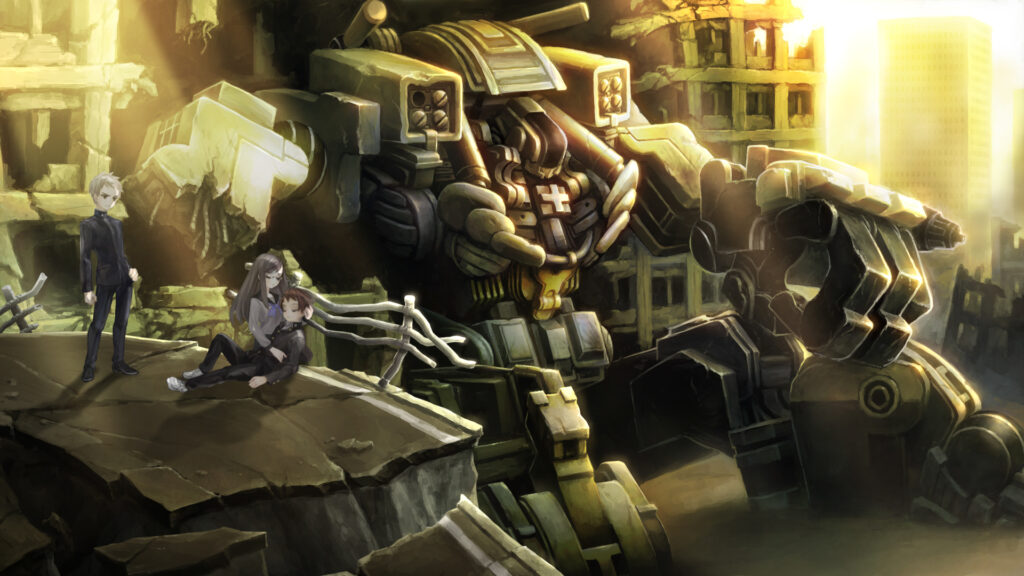
13 Sentinels: Aegis Rim review – a time-twisting mecha marvel
For players with certain media interests, Vanillaware’s latest opus 13 Sentinels: Aegis Rim is going to be like discovering a gold mine; a checklist of nerd bait guaranteed to get the dopamine flowing.
To wit, it is an:
- Anime styled
- Genre-blending
- Visual novel
- Also a strategy game
- Featuring giant robots
- With time travel
- And multiple teen protagonists
- Who discuss their feelings – oh, so many feelings
More to the point for Gayming Mag, some of those feelings are ✨gay✨ – and, pleasantly, queer representation is handled rather well, despite a few moments that could be considered gay-baiting. We’ll get back to that though.
At the core of the game is a temporal knot that ties together characters from – and sends them between – multiple time periods, tasking them with piloting giant robots in defence of the Earth and, in characteristic form, cancelling the apocalypse. It’s perhaps no coincidence that 13 Sentinels’ subtitle draws comparison to a certain live-action movie…
Notably, it starts in 1985, a key period for Japanese pop culture, with characters obsessed with kaiju films and toksusatsu television. There’s an interesting meta-narrative, with the cast often having dreams of real-world attacks by the same monsters they watch on screen – one of many elements of 13 Sentinels that questions the influence of fiction on reality. At the heart of the mystery is what the invaders are, how they’re assaulting multiple periods in history, and where the eponymous Sentinels that can stand up to them come from.
While it blends together many gaming genres, 13 Sentinels is ostensibly more “narrative adventure” than anything. It’s often slow and ponderous, asking you to pay attention to the voluminous cast and their relationships. With thirteen playable characters – and at least one major supporting figure with two identities – plus leaps between time periods to keep track of, it can get convoluted at times too, although Vanillaware sensibly splits each protagonist’s arc up, and keeps each chapter with them reasonably short to ensure the pacing remains zippy.
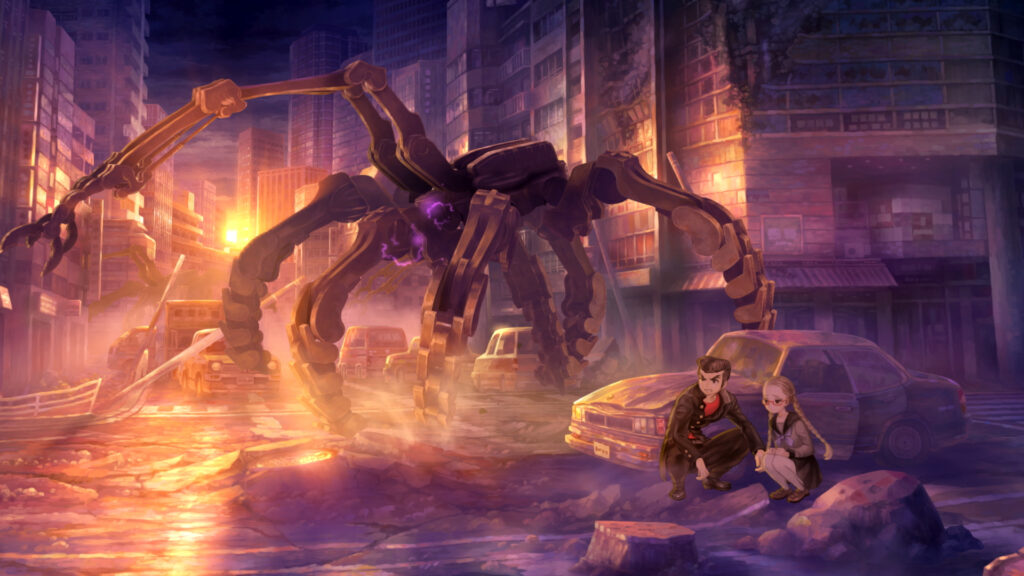
It’s not just page after page of dialogue though. You’ll directly control each hero, exploring their settings and talking to people. There’s occasionally some light environmental puzzle solving to do, but the main mechanic is your “thought cloud”, a series of keywords you can ponder internally for greater insight, or link with objects or characters in the wider world. This makes for a feel closer to something like a Phoenix Wright game, connecting evidence to a case, but with a far more complex plot. As the story takes you between different time periods, you’ll find the decisions and connections you make can have grand effect on history.
It’s the personal connections that are arguably more important though, and with a cast of emotional teenagers, there’s lots of budding relationships to connect with. A lot are cast in the typical anime mold, and particularly the 1980s anime mold – overwrought blushes, eternal love being proscribed by busy-body friends, hyper-exagerrated masculinity or femininity, and so forth. Despite this, a lot of the pairings are quite sweet, but one really stands out – Takatoshi Hijiyama and Tsukasa Okino.
Players meet Takatoshi in 1944, pursuing a girl named Kiriko who he thinks is the granddaughter of a Japanese military scientist. In reality, she’s the male-presenting Tsukasa Okino, a genius from the future with ties to the Sentinels. After Takatoshi is transported to 1985 with her, the two grow closer, despite his initial confusion over Tsukasa’s gender.
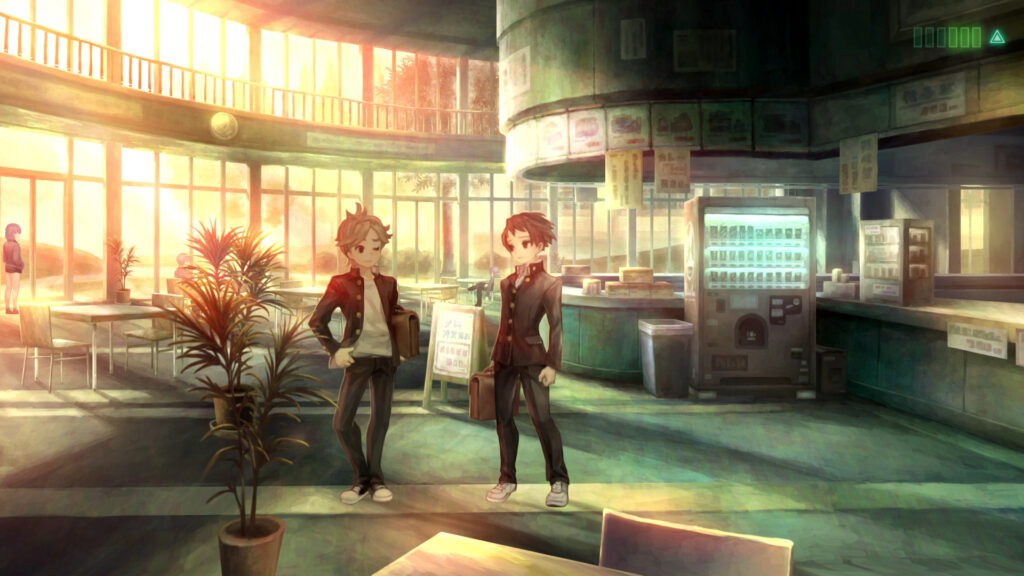
This point in particular is handled marvelously. When Tsukasa tries to explain their gender, they first dismantle norms, saying of dressing as Kiriko, “I’m not exactly the picture of masculinity anyway. Better than trying to pass as some militant with a buzzcut”. They then put it in simpler terms, adding “let’s say some binaries work for me, and others don’t.” Takatoshi, for his part, starts using appropriate pronouns when interacting with Tsukasa or Kiriko.
Even with the aforementioned gay-baiting is dealt with in a relatively positive way. Early on, Juro Kurabe, the first protagonist, is suspected by Iori Fuyusaka (a later playable character) of having a secret liaison with a male friend. Rather than an aggressive “no homo” display, the pair gently laugh it off, while Iori says she wouldn’t have had a problem. It’s all delightfully progressive, especially for a Japanese game set in the conservative 1980s.
While the civilian sections succeed thanks to their remixing of character and plot tropes and delivering a keen narrative focus, the strategy feels almost like a separate game. It’s far more interactive, blending real-time and turn-based mechanics as you pilot a series of gargantuan robots. The goal of each encounter is to defend a Terminus point from attacking kaiju. These sequences take place from an overhead perspective, with you moving your Sentinel around the streets of a besieged Japan. Unlike many strategy games where you’re moving units from square to square, the city layout means you’re moving around the edges of each block, which changes how you must think about each encounter.
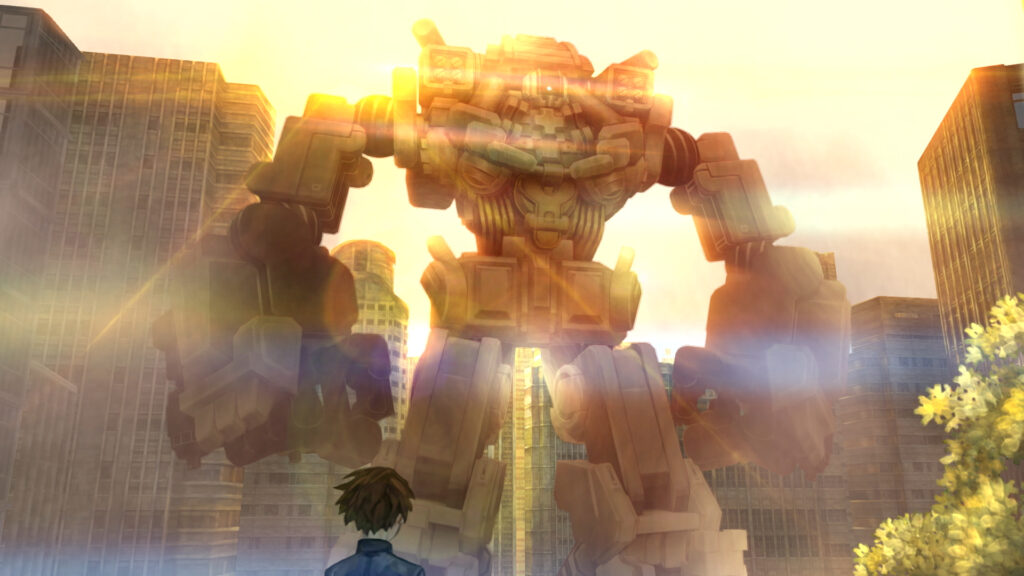
The mecha designs are great, too – hefty, weighty, ugly machines of war, rather than the sleek, colourful robots of most anime in the genre. They each have a unique approach to combat, from widespread missile arrays specialising in swarm control and enemy dispersal, to up-close heavy melee, or even surprisingly agile attacks, such as being able to leap into the air and slam down on vulnerable enemies. As you take out enemies, you’ll build a charge for special attacks, but these are highly limited in use, and the question of when to unleash them can crucially change the tide of battle.
As anyone who’s played Vanillaware’s previous efforts such as GrimGrimoire or Odin Sphere will be unsurprised to learn, 13 Sentinels is a beautiful game, too. The civilian sections are gorgeous, with intricately detailed hand-drawn backgrounds and characters to match. They’re hugely evocative of whichever time period they’re set in, and although character animation can feel a little stilted to begin with, it soon becomes part of the game’s charm. The mecha sections go to the other extreme though, overly-detailed and cold, with the enemy monsters often too small to keep track of against the backdrops.
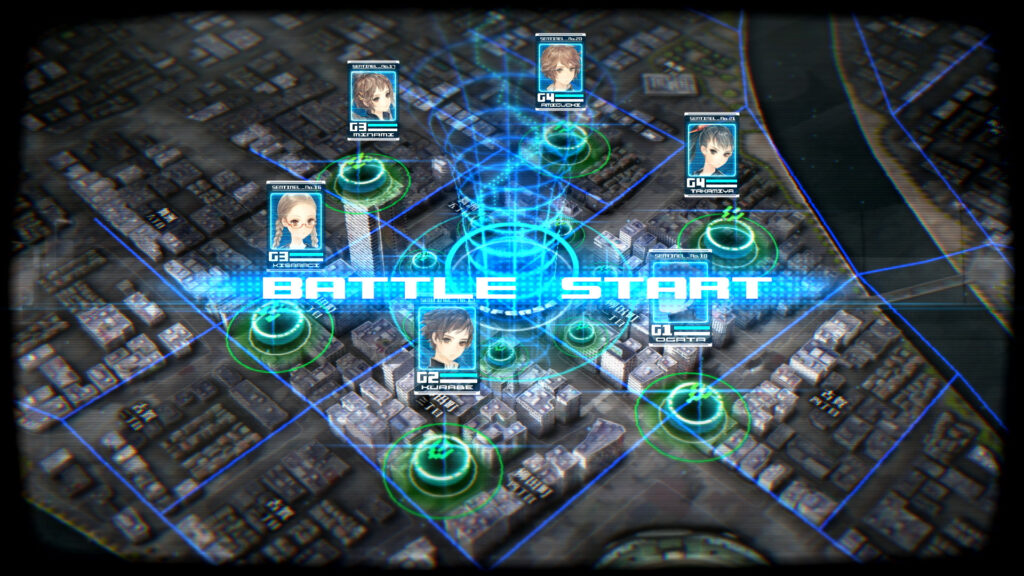
The biggest criticism that can be levelled at 13 Sentinels is that despite its time-hopping, it’s paradoxically rather linear. There’s not a great deal of exploration possible in the civilian sections – a trade-off of those detailed, hand-painted environments, no doubt – and the strategy sections are effectively win/lose binaries.
There are also some oddities with translation that will rankle players with any understanding of Japanese. For instance, at one point, a character refers to H.G. Wells’ The War of the Worlds, using the author’s name in the Japanese audio, but the English subtitles merely says “the famous author”. It’s time Japanese video games got accurate subtitles, rather than just “dubtitles” of the English audio.
Still, this is an easy contender for Vanillaware’s finest game to date, and one that deserves particular attention for its positive depiction of gay and trans characters.
13 Sentinels: Aegis Rim is out now on PS4








FYI, there might be a legal department suggesting that the author’s name shouldn’t be used in Western territories. Localization is a tricky business.
Thanks for the review, the game looks cool. How about pointing out the platform(s) it’s on, though?